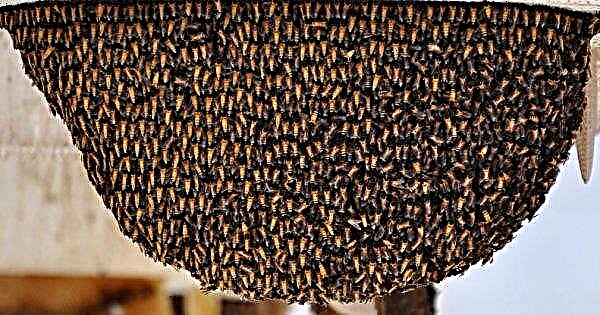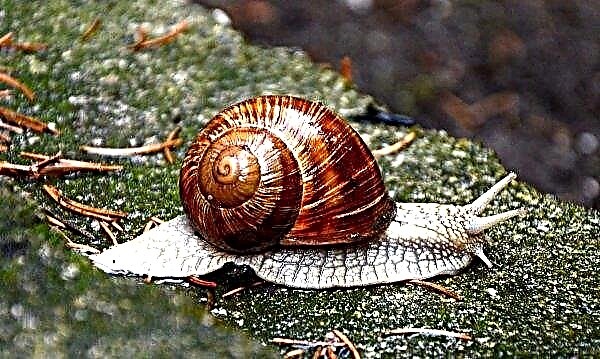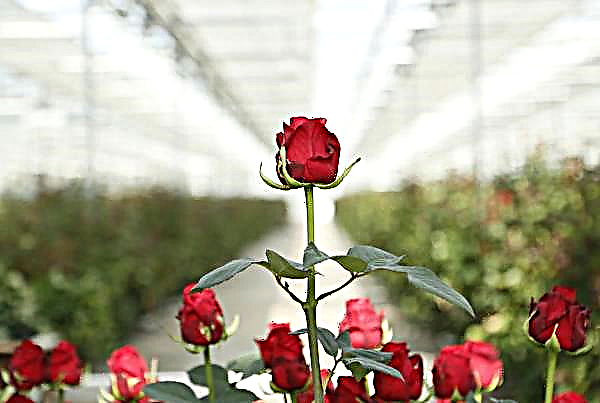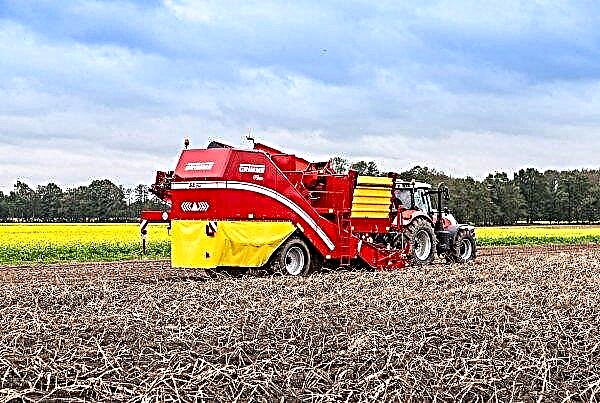Growing seedlings of bell pepper is an opportunity for personal control of microclimatic conditions and growing technology, which favorably affects the level of productivity. However, directly in protected soil, the plant is at risk of infection by numerous diseases, pests and pathogenic microorganisms.
Moreover, certain diseases and pests cause irreversible damage to this vegetable crop, and in some cases lead not only to a significant decrease in productivity, but also to the absolute death of seedlings.
The main causes of the appearance of diseases and pests of pepper in the greenhouse
The main factors that help to understand why peppers are sick in the greenhouse:
- high level of humidity;
- too warm weather, stuffiness in the greenhouse;
- thickened beds;
- infected seed
- lack of disinfection of the soil before planting.

The main diseases of pepper in the greenhouse and methods for their treatment
Vegetables such as peppers are more vulnerable to the penetration of pathogens into their livelihoods, and their subsequent active development in greenhouse growing conditions, than the same plants that are grown on open soil beds. Distinguish between bacterial, viral and fungal diseases of the culture, the varieties of which are considered in more detail in the material presented below.
Bacterial
Bacterial cancer
A serious disease caused by a bacterium Сlavibacter michiganensis, manifested in the form of the following symptoms:
- local formation of small spots of dark color with characteristic white centers on both the fruits and leaves, as well as shoots;
- over time, the points merge with each other, there is a loss of color and free falling of leaves.

Treatment:
- spraying the plant with a solution of copper sulfate or with products containing copper;
- cleaning from the bed of affected plants.
Lightning fast bacterial wilting
This bacterial damage to the culture is manifested in the penetration of pathogens into the vascular system of the plant and blocking the flow of nutrients.
Signs:
- yellowing spots on the foliage of the plant;
- drying the plant;
- the allocation of a whitish substance with an incision in shoots or stems.

Treatment measures:
- cleaning from the bed of affected plants;
- processing of all other seedlings with copper preparations.
Black bacterial spotting
The main and only factor in this disease of vegetables are phytopathogenic bacteria Xanthomonas vesicatoriapreserving their livelihoods on the seeds of culture. Based on this, in order not to get such an “unpleasant bonus” in the process of growing seedlings, it is advisable to pre-disinfect the seed. Numerous spreading of spotting provokes high rates of air temperature and humidity.
The manifestation of the disease is as follows:
- spots on the leaf part of the plant, first brown, and then black, with clear borders;
- the latter tend to increase in size;
- the nutrition of the plant is disturbed, which causes the drying and falling off of the leaves, slowing down or completely terminating the ripening of the fruits.

In treatment, biofungicidal and antibacterial drugs such as Fitosporin and Planriz have proven themselves well.
Viral
Mosaic plain or tobacco
This is a very dangerous disease caused by TMV (tobacco mosaic virus, Eng. - Tobacco mosaic virus, TMV), which, due to its harmfulness and speed of spread, can cause an epidemic among similar plants (epiphytotia).
Key features:
- loss of transpiration (normal water exchange) of the leaves and the appearance of marble patterns on them with alternating yellow and green intersperses of light and dark shades;
- foliage twisting;
- small fruits that do not meet the standards in form, having brown dots, are not able to ripen completely;
- 30% reduction in yield.

In order to avoid damage to the culture by this virus, it is necessary to thoroughly process the seeds and soil before planting, and also not to part with the latter for several years in a row in the same greenhouse. In the fight against tobacco mosaic, according to gardeners, the iodine solution in combination with milk whey does a good job.
Alfalfa Mosaic
A less common and infrequent disease that affects pepper culture through the penetration of a pathogen - a virus Alfalfa mosaic virus.
Symptoms of the lesion are characterized by the following symptoms:
- the appearance on the leaf part of the plant spots of various shapes yellow or white;
- forced acquisition of a significant number of flowers of sterility;
- Light streaks with characteristic dark edges appear on previously formed fruits of the culture.

Control measures: diseased plants must be urgently removed from the greenhouse.
Phytoplasmosis, or columnar
Another dangerous disease of bell pepper, provoked by microorganisms of phytoplasm and transmitted by ticks, aphids and other pests.
Symptoms:
- the height of the plant bush does not reach the declared size;
- the edges of the upper leaves are wrapped up, curled and eventually dry completely;
- in the absence of treatment, the dried leaves turn yellow and fall, and the plant may die;
- the formation of fruits is incomplete: vegetables get a red tint in advance, they are small, deformed, and taste bitter and not juicy.

Control measures:
- pulling out infected bushes together with the root system and transportation away from the beds with still healthy plants;
- obligatory disinfection of bearing greenhouse structures, equipment and the soil itself;
- loosening of beds and weeding to prevent the spread of weeds and phytoplasm.
Important! It is strictly forbidden to throw post-harvest leaves at the greenhouse site, this provokes the occurrence of plant diseases.
Spotted wilting, or bronze
Rare virus disease caused by a virus Tomato spotted wilt virus (TSWV).
Signs of defeat:
- leaves of seedlings acquire a bronze color with shades of gray and purple;
- due to the progress of the disease, brown spots or stripes spread on the leaf part of the plant, extending from the base to the ends;
- rings with a green or yellow hue may appear on the fruits of the same color, and dark-colored stripes form at the base of the peppers.

In order to prevent the occurrence of this viral disease in pepper, it is mandatory carry out pre-sowing seed disinfection, and in addition to this:
- in no case do not plant pepper seedlings near the flower site;
- do timely weeding of beds from weeds.
Fungal
Gray rot
Mushroom Botrytis cinerea is the causative agent in sweet pepper, cultivated under a film cover of a disease such as gray rot. In polycarbonate greenhouses, this phenomenon is less common. The cause of the occurrence is an increased level of air humidity. Rapidly spreading, gray rot is so harmful to the formed plants that it reduces the yield level by at least 30%, and often wet spots remain on the fruits, while the presentation of peppers significantly deteriorates.
Signs:
- the appearance of brown dots on the lower part of the stems;
- the formation of dark, almost black spots on all parts of the plant;
- as the lesion, all seedlings become moldy.

Treatment of gray rot in pepper culture is carried out with such drugs as Previkur, Acrobat Ordan, Fundazol, Skor, and the like.
Alternariosis, or dry spotting of pepper
Another fungal disease caused by a fungus Alternaria solani. True, unlike gray rot, it occurs much less frequently in culture and preferably in the autumn season.
Signs:
- the appearance of uneven black spots in the area of leaf veins;
- black mold coating of vegetables.

Control measures:
- strict observance of crop rotation rules;
- cleaning the affected areas of the plant, or individual seedlings.
Important! The treatment regimen for any disease or pest attack in each case should be comprehensive and individually planned.
Vertex rot
Pepper rot of pepper occurs due to insufficient calcium in the plant, as well as the presence on the surface of vegetables of various fungi, viruses and bacteria.
Symptoms:
- the appearance of dark green spots at the base of the fruit, eventually changing color to dark brown;
- damage by rotting of plant areas provokes obvious wrinkling and dryness.

Control measures:
- removal of affected plants;
- compliance with the proper humidity level in the greenhouse;
- loosening and mulching of the soil, removal of weeds;
- systematic watering;
- dressing the root system of the plant with calcium nitrate (at least 3 times for the entire growing season).
Late blight
A significant damage to the crop can cause such a fungal disease as late blight. Phytophthora fungal spores can be transmitted by air and stay in the ground for a long time.
When a plant is affected, the leaves primarily suffer:
- spots of brown-brown color appear on them with a light gray coating of medium, but rapidly increasing, size;
- spots gradually spread to the surface of the whole plant, as well as to the fruits;
- in dry weather, the edges of the leaves begin to wrap, dry and fall off;
- in rainy times, black spots form on the foliage, which begin to rot over time.

Biofungicides such as Alirin-B, Quadris, Ordan, the systemic drug Fitosporin-M, the biological bactericide Gamair, or the contact-system fungicide Oksikhom will help to cure this fungal disease.
Verticillus wilting
Vertical pepper wilting is an incurable disease of Bulgarian pepper culture caused by a fungal plant pathogen Verticillium dahliae kleb.
Signs:
- the leaves of the plant acquire a pale shade and roughness, become hard and stiff;
- the fruits are formed small, irregular in shape and with a low content of seeds inside.

The disease can also catch disease-resistant varieties of pepper, however, due to its slower spread in these varieties, the fruits have time to ripen.
The treatment of this type of pepper disease will not have any success, it is only possible to avoid the occurrence of an ailment by preliminary antibacterial treatment of planting material and earthen soil.
Blackleg
As a rule, most often an ailment named “black leg” affects seedlings of pepper, but it can also occur in adult weakened plants. The path of penetration is soil or seed. The reasons for the spread among the whole culture are too thick a method of planting seedlings or insufficiently ventilated greenhouse.
Diagnose this fungal disease by:
- the darkened lower part of the stem of the culture;
- dryness and rotting of the seat, which inevitably leads to the death of the plant.

The pathogen elimination procedure can be carried out in the following ways:
- pre-plant sterilization of the soil by such microbiological fertilizers as Baikal, Radiance, and seeds - by the immunological enhancing preparations Epin and Agat;
- daily inspection of the plant for abnormalities;
- unconditional compliance with the irrigation regime;
- immediate watering of the soil part with a solution of potassium permanganate at the first detection of lesions of seedlings;
- ventilation of a greenhouse without a through flow of air during the spread of the disease.
Fusarium wilt
If the pepper culture is affected by fusarium fungal wilting, the stem vessels become blocked with spores of the fungus, as a result of which the plant’s nutrition process with useful substances and moisture stops.
Symptoms: the leaves begin to turn yellow and wrap inward.

Unfortunately, this disease is not treatable, and diseased sprouts must be eliminated.
It is only possible to prevent the occurrence of fusarium wilting by observing such measures:
- selection of varieties of bell pepper well resistant to disease;
- presowing treatment of seeds with special means, for example, Fundazole;
- harvesting old tops after harvest.
Cladosporiosis
With the darkening of the entire surface and the formation of brown spots on the outside, as well as the appearance of a gray coating on the inside of the leaves of the pepper, one can suspect the occurrence of cladosporiosis, which especially affects the plant in conditions of high humidity.

Treatment and prevention:
- cultivating the earth with a solution of copper sulfate in autumn after harvest;
- annual selection of a new place for planting seedlings;
- reducing the number of irrigation and reducing the level of humidity in the greenhouse when a disease is detected;
- treatment of the disease is carried out by the fungicides Barrier, Barrier.
Important! According to statistics, twice as many pests affect sweet bell pepper than bitter.
Preventive measures
Bacterial, viral and fungal diseases often affect young, still immature and adult weakened plants, for this reason you need to carefully monitor the time of dressing, the level of illumination and moisture of the plant. In no case can sick plants be left on the bed, and seedlings that have not yet been affected should be treated with a copper solution.

Measures to help prevent the occurrence of fungal diseases in pepper culture:
- compliance with distance gaps during landing;
- maintaining a certain level of temperature and atmospheric humidity necessary for the full-fledged cultivation of vegetables in a greenhouse;
- ensuring minimal trauma to vegetables in rainy weather;
- regular change of soil in the greenhouse;
- elimination of absolutely all plant residues in the greenhouse and soil sterilization by steaming;
- sowing of the crop is carried out only with healthy seed material, which must be checked according to the methodology developed for greenhouse tomatoes;
- suppression of virus activity in pre-sowing seeds is carried out by heating the material for 3 days at a temperature not lower than + 70 ° C;
- disinfection of seed with 10% sodium phosphate solution and 2% sodium hydroxide solution to protect the culture from active mosaic carriers - ticks and aphids, as well as sucking proboscis insects;
- strict adherence to the technological growing algorithm;
- control of savings in the greenhouse building of suitable microclimatic characteristics, in particular temperature and humidity;
- the choice of seeds that are more resistant to diseases and pests of pepper varieties, for example, mosaics, is well opposed by Cardinal, Fidelio, Aries and Sonata.
Outward signs of deviations in the development of plants depend on the type of disease and the type of pest, which were attacked by pepper when breeding pepper in greenhouse conditions.Knowing “in person” the external manifestations and the first symptoms of the manifestation of the disease provide an excellent opportunity to form an effective treatment regimen for a vegetable culture in the shortest possible time.












